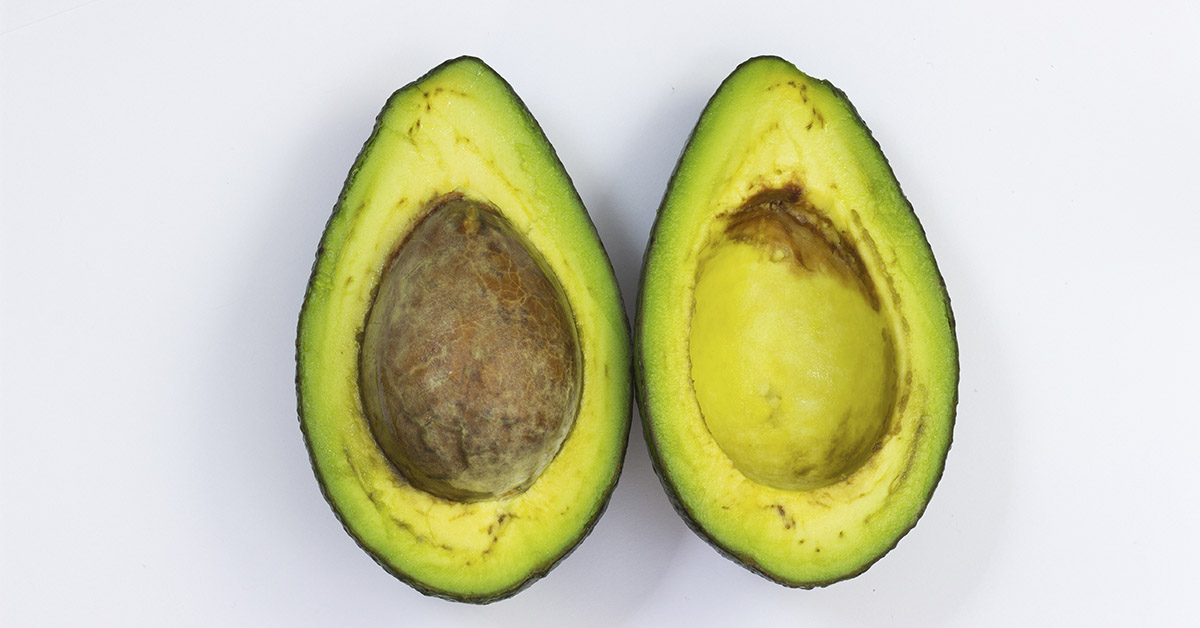It’s safe to say that avocados are having more than a moment. Whether it’s for guacamole, avocado toast, or even in a green smoothie, we can’t seem to get enough. Avocados are a versatile and delicious fruit that many people enjoy. However, you’ve likely encountered those pesky brown spots on avocados before. Have you ever wondered what causes these spots and whether they are safe to eat? Let’s discover what causes these brown spots on avocados and determine whether or not they are safe to eat.
What Are Those Brown Spots On Avocados?
Firstly, it is important to understand that avocados, like other fruits, have a complex cellular system. This system operates to transport and store various substances, such as nutrients, water, and sugar. When something disrupts this delicate system, something called vascular browning can occur. Vascular browning refers to the phenomenon where the avocado’s transport systems shut down, change color, and become visible to the naked eye. (1)
The most common cause of vascular browning in avocados is exposure to cold temperatures, particularly in your refrigerator. Cold temperatures can weaken the cells in the avocado’s tissue, even after a few days of ripening at room temperature. As a result, the airways in the fruit begin to shut down, leading to tissue death and the formation of brown spots.
Are These Avocados Still Safe To Eat?
Fortunately, avocados with slight vascular browning are generally safe to eat. The browning itself does not pose any health risks. However, as the browning becomes heavier or turns black, it is best to discard the fruit as it may develop a rancid taste. This indicates that the vascular cells are dying. Again, it does not mean that it is dangerous to consume, per se, but more so that it won’t taste very good. (2)
How To Take Proper Care of Your Avocados
Now that we understand the cause of brown spots on avocados let’s explore some tips on choosing a ripe avocado and properly handling them to prevent browning.
What to look for when buying avocados
When buying avocados, look for fruits that are slightly soft when gently squeezed. If they are too firm, they are not yet ripe and may take a few days to become ready to eat. However, avoid avocados that are overly soft or have significant bruising or mold, as these can indicate more serious issues.
Helping your avocados ripen faster
To help avocados ripen faster, store them in a paper bag at room temperature. The bag helps to trap the ethylene gas that avocados naturally release, which speeds up the ripening process. If you need your avocados to ripen even faster, you can place them next to other fruits such as apples or bananas, as these fruits also release ethylene gas.
Read: Life-changing: Here’s How To Perfectly Freeze Your Avocados
Storing your avocados properly
Once your avocados have ripened and you’re ready to consume them, it’s crucial to store them properly to prevent browning. If the avocados are whole and haven’t been cut into, you can store them in the refrigerator to slow down the ripening process. However, be mindful that this can make them more susceptible to vascular browning, so it’s best to consume them within a few days.
If you have already cut into an avocado and have leftovers, you can prevent browning by applying lemon or lime juice to the exposed flesh. The acidity in these juices helps to inhibit the enzymatic browning reaction that causes the discoloration. Alternatively, you can tightly wrap the cut avocado in plastic wrap, ensuring there is no air exposure, which can also slow down oxidation and browning.
What to do with overripe avocados?
Lastly, what can you do with overripe avocados? Even if your avocados have become too soft and mushy to enjoy in their usual form, they can still be put to good use. Overripe avocados are perfect for making guacamole, smoothies, salad dressings, chocolate puddings, or even as a moisturizing face mask. The possibilities are nearly endless, so get creative and enjoy experimenting with the fruit that has been deemed green gold.
The Bottom Line
The brown spots on avocados are typically caused by vascular browning, which occurs when the avocado’s transport systems shut down and change color. While slight browning is generally harmless, heavier or black browning indicates that the fruit may have a rancid taste. To avoid browning, carefully choose ripe avocados, store them properly, and apply lemon or lime juice to cut surfaces. Remember, even if avocados become overripe, they can still be utilized in various delicious and beneficial ways. So enjoy your avocados and make the most of their creamy goodness.
Keep Reading: 7 Health Benefits of Avocado Oil
Sources
- “This Is What Causes Brown Spots on Your Avocados.” Taste of Home. Hannah Twietmeyer. March 29, 2023.
- “5 Ways to Tell Your Avocado Has Gone Bad.” Healthline. Marsha McCulloch, MS, RD. April 11, 2023.

